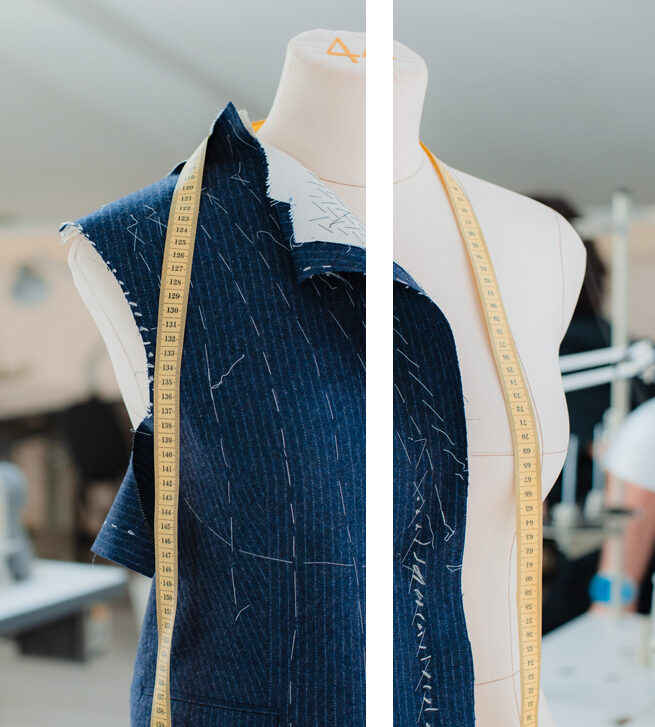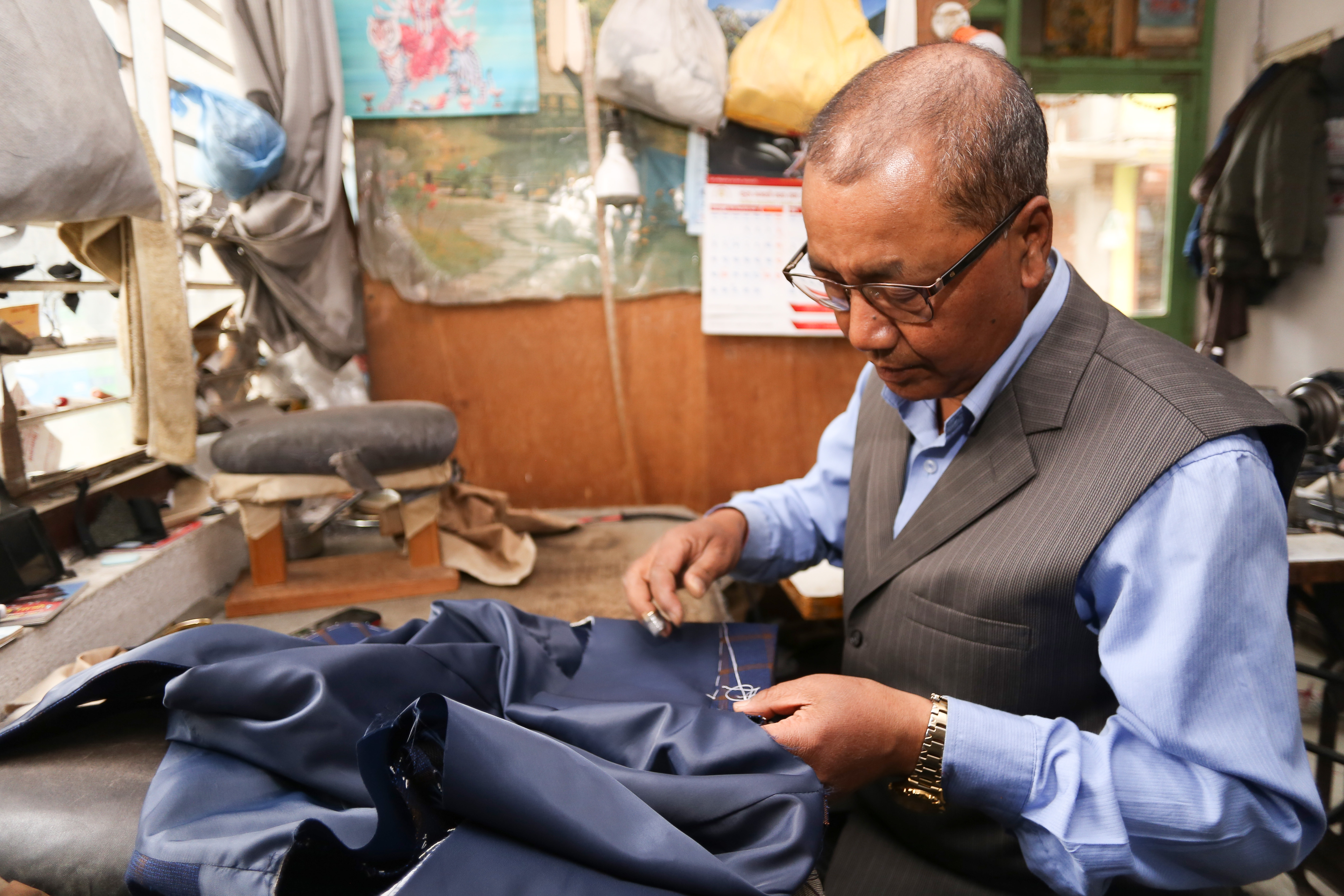Tailor Perth: Remarkable Tailoring for a Perfectly Fitted Wardrobe
Tailor Perth: Remarkable Tailoring for a Perfectly Fitted Wardrobe
Blog Article
Recognizing the Tailoring Refine: From Material Choice to Last Fitting for the Suitable Wardrobe
The customizing procedure is a complicated interplay of art and science, beginning with the vital choice of fabric option and culminating in the specific modifications of final fittings. Each material type brings unique qualities that affect not only the visual charm yet also the garment's long life and viability for different celebrations.
Importance of Material Option
Selecting the right material is critical in the customizing process, as it straight affects the comfort, toughness, and total aesthetic of the last garment (tailor perth). The selection of material sets the structure for the garment's efficiency, design, and capability. Various materials possess unique buildings, such as stretch, breathability, and weight, which can considerably influence exactly how the garment drapes and fits the body
Moreover, fabric option influences the garment's durability and simplicity of treatment. High-quality textiles can endure damage, maintaining their appearance and structure over time, while lower-quality products may bring about pilling or fading. Additionally, the appropriate material adds to the garment's capacity to shift across seasons and celebrations, therefore enhancing flexibility.
A customized item made from an ideal material not just showcases craftsmanship however also raises the user's self-confidence. Consequently, comprehending the subtleties of fabric selection is paramount for any type of tailoring venture. It guarantees that the final item not only satisfies the visual wishes of the client yet likewise straightens with useful requirements, consequently achieving an unified balance between kind and function in the customized closet.
Sorts Of Fabrics and Their Usages
Recognizing the various sorts of textiles available is important for making notified choices throughout the customizing procedure. Each textile possesses unique features that dictate its suitability for particular garments and celebrations.
Its convenience enables it to be tailored right into everything from tee shirts to outfits. Its natural elasticity helps garments keep shape over time.
Silk exhibits luxury and is light-weight, making it best for eveningwear and fragile shirts; nevertheless, it calls for careful handling because of its fragility. Linen, with its distinctive finish, is a popular option for cozy climates, providing a airy and crisp feel, yet it wrinkles quickly, which might impact the garment's appearance.
Artificial textiles, such as polyester and nylon, offer durability and resistance to wrinkles, making them appropriate for everyday wear and energetic apparel. Comprehending these fabric types and their residential or commercial properties enables for much better decision-making, making certain that each customized piece not only fits well however additionally aligns with the intended objective and event.
The Tailoring Techniques Explained
The art of tailoring relies upon a range of strategies that change textile into well-fitted garments. Central to this procedure is pattern drafting, where a tailor produces design templates based on the customer's measurements and desired design. This first step guarantees that the garment will fit the user correctly prior to any kind of weblink reducing occurs.
When patterns are developed, cutting techniques enter play. Precision is extremely important as inaccuracies can lead to misfitting garments. Tailors often make use of numerous reducing methods, such as single-layer reducing for detailed styles and multiple-layer cutting for effectiveness on basic patterns.
Basting is another vital method, enabling tailors to temporarily sew fabric pieces with each other for a preliminary fitting. This technique offers the possibility to assess the drape and overall silhouette prior to last stitching.
Seaming strategies, including french joints and flat-felled joints, enhance the garment's sturdiness and aesthetic charm. Tailors additionally use strategies such as interfacing and extra padding to give structure and form to certain areas, like shoulders and collars.
Finally, ending up strategies, consisting of hemming and edge finishing, guarantee the garment's durability while giving a refined look. Together, these methods develop the backbone of efficient customizing, causing charming, tailor-made garments.
Fitting Adjustments and Considerations

Key factors to consider include the shoulder fit, which needs to neither sag nor restrict activity, Visit This Link and the sleeve size, which should permit for comfy arm movement while maintaining a polished look. Furthermore, adjustments at the waist can fine-tune the silhouette, with alternatives to allow out or absorb textile as needed.
The surge of pants is one more critical aspect; it should sit easily above the hips without creating pain, enabling convenience of motion. Hemming lengths for both trousers and skirts must show the user's favored design while valuing proportions.

Preserving Your Tailored Apparel
Always adhere to the treatment tag instructions, which may suggest dry cleaning for delicate fabrics or machine washing for even more sturdy materials. Avoid constant laundering, as this can put on down the fabric and change the garment's form.
Storage is equally crucial; usage padded hangers for coats and jackets to keep shoulder structure, and shop pants folded neatly or hung to avoid creasing. Shield garments from direct sunshine, which can discolor shades and damages fibers.
Furthermore, regular examinations for small repairs can prevent larger problems. Look for loose switches, tearing joints, or signs of moth damages, addressing these troubles immediately to maintain the garment's stability.
Finally, think about seasonal turning. Wearing tailored items in moderation enables materials to recoup, extending their life-span. By carrying out these upkeep strategies, you can make sure that your customized garments remain as pristine as the day you initially used them, enhancing your optimal wardrobe for years ahead.
Verdict
The customizing process, encompassing textile selection, proficient strategies, and exact suitable changes, plays a crucial duty in developing garments that enhance both comfort and design. Recognizing the significance of upkeep expands the life of customized garments, strengthening their value in a well-curated wardrobe.
Choosing the right material is crucial in the tailoring procedure, as it directly affects the convenience, durability, and general visual of the final garment. The selection of fabric sets the structure for the garment's design, performance, and functionality. Various materials have distinct residential or commercial properties, such as breathability, weight, and stretch, which can significantly affect exactly how click reference the garment drapes and fits the body.
The art of customizing counts on a variety of techniques that transform textile right into well-fitted garments.The tailoring procedure, incorporating material choice, knowledgeable techniques, and specific fitting changes, plays a critical duty in creating garments that improve both comfort and style.
Report this page